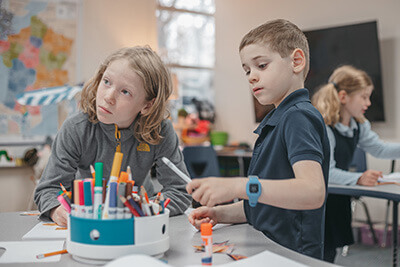April 25, 2024
 from Dr. Bill Hudson, Head of School
from Dr. Bill Hudson, Head of School
In the early days of flight training, pilots learn an important lesson: “Aviate. Navigate. Communicate.” This is a mantra used to teach pilots a hierarchy of tasks to be followed in order of priority during flight operations, especially in emergency or high-workload situations. When I first heard this phrase, it occurred to me that it is not unlike the guiding principles of emergency preparedness at MPA—focusing on ensuring safety, understanding the situation, and maintaining clear communication.
“Aviate” prioritizes safety and stability and translates to securing the immediate safety of students and staff. It means taking immediate action to protect everyone from harm. Once safety is secured, the next step is to “Navigate,” assess the situation and navigate through the emergency. This involves understanding the nature of the emergency, its scale, and potential impacts. It requires activating the school’s emergency response plan, determining the best course of action, and making decisions based on the information available at the time. It is crucial to “Communicate” in a crisis to inform and coordinate so that community members (including parents) are clear about what is happening and what needs to be done to manage the situation effectively, reduce panic, and enable a coordinated response.
Successfully managing a crisis or emergency requires a structured approach, ensuring that the most critical elements are addressed in a sequence that prioritizes safety, efficient response, and effective communication. This was put to the test this week when two wholly unrelated medical incidents occurred within 24 hours. I must say that this is highly unusual, and it is the first time in my over 30 years of experience that it has occurred. I’d like to provide some context and walk you through our response.
MPA recently updated our emergency response commands to those developed by the “I Love You Guys” Foundation. The Standard Response Protocol (SRP) does not replace our comprehensive Emergency Response Plan. Rather, it is a classroom response enhancement for critical incidents designed to provide consistent, clear, shared language and actions among all students, staff, and first responders.
Our Standard Response Protocol was employed to address the medical incident that occurred after school on Tuesday. There was initial confusion in issuing the appropriate command, and the first all-school announcement was “Lockdown, locks, lights, out of sight,” leading some to think we were in a full lockdown with a real threat in the building. The correct command should have been, “Hold: in your classroom area.”
Despite the incorrect SRP command, the rest of the response went as it should have. The medical incident was addressed according to our Emergency Response Plan, and the needs of the individual were met promptly and with dignity and privacy. I am relieved to share that the individual is receiving the appropriate medical care and is grateful for the actions of MPA employees and a parent who stepped in to evaluate and provide care while we awaited first responders.
The second, wholly unrelated medical incident occurred yesterday at approximately 1:20 PM. The correct SRP command, “HOLD in your classroom or area” was used, hallways were cleared, doors were closed, and door windows were covered. Students remained in their classrooms, and learning continued as usual. As soon as the individual received the needed medical attention, an announcement was made that the Hold had ended.
As is our practice, we communicate with parents as soon as we are able. Moving forward, we will not identify the situation as a “medical lockdown” and instead use more precise words such as “a medical incident” or “first aid event.”
We conduct a number of drills throughout the school year to instill confidence and ensure that students and staff are prepared for emergencies without fear. Afterward, the administrative team takes time to assess and refine our procedures, proactively identifying and implementing improvements to enhance our preparedness and response. I am grateful that the two medical incidents this week were not life-threatening. Be assured that we will continue our practice to learn from them. For more information about safety and security at MPA, please click here.